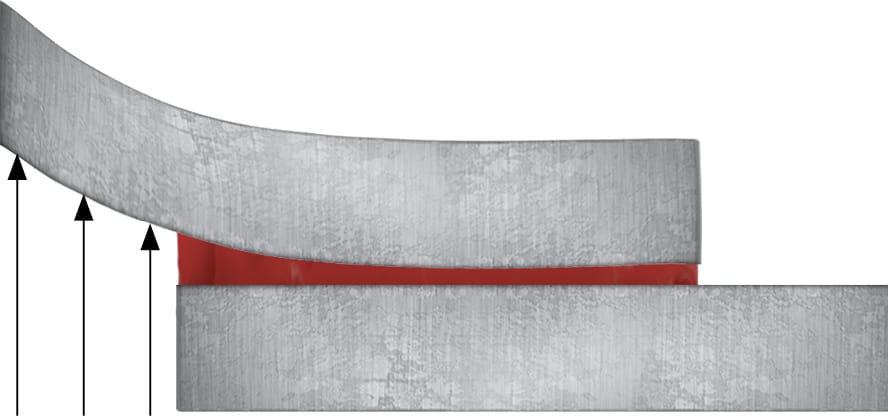4.4.4 Peel Stress
Peel stress is primarily a combination of shear and tensile stresses. Peel geometry varies with substrates, bond strength and the angle of separation, but what peel situations have in common is that at least one substrate is flexible enough to be bent back and pulled away from the other by the applied force. Separation begins at one end and progresses along the length of the bond like a zipper, with the stress concentrated at the leading edge. More and more of the substrate is progressively debonded as the free end is pulled away from the opposite substrate. The stress-strain plot of a peel test typically shows an initial peak when the peel begins, followed by a plateau of relatively even stress as the specimen is peeled apart, with stress dropping to zero at full separation. Peel strength is typically reported as the average value of this plateau in force per unit width. Failure mode may also be reported.


Peel tests measure the average force required to fracture the adhesive bond between flexible materials when pulled at a specified angle. A common test to evaluate peel stress performance of an adhesive is T-Peel ISO 11339.

